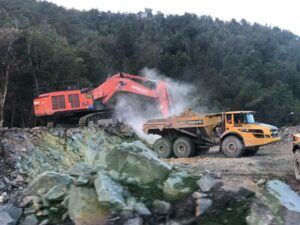Plan – Do – Check – Act
This is a simple framework for safety, but it really does work if you break it down to bare bones. However, the CHECK or monitoring is the biggest gap in businesses within Aotearoa that we see when we assess a business’s health and safety.
Are you doing what you say you are doing? How do you know you are compliant if you’re not monitoring? The key questions for monitoring = Why, Who, What, When, Where & Measure.
So, what’s the deal with Monitoring?
Breaking it Down
- Why? Because we need to know if our controls are effective. You don’t if you don’t monitor in the right way, with the right person, at the right time and the right place using the right tool.
- Who? The simple answer = everyone. Different eyes see different things. It all starts with Directors, they need to be visible, understand the work that is done and monitor it and ask the hard questions, and importantly acknowledge work completed safely. Managers, get out, be visible and check and reward good work. Supervisors, supervise and mentor the workers, especially new workers and monitor their work. Workers, get the work done and monitor your mates to ensure they work safe. It’s on everyone, not just the manager or supervisor.
- What? Critical Risks is where it’s at. You can check other stuff but ensuing critical risk controls are in place and operating as intended is where the smart money is at as it’s where your workers are most likely to be seriously hurt. And remember, monitoring does not only include completing a site inspection checklist. It could be a chat with a worker, review of safety data, review of safety committee meeting minutes, safe work observations, review of SOPs training completion etc, etc, etc. There are so many ways to monitor, don’t get stove piped into a weekly site inspection checklist, these are important but not the only tool. And finally, don’t forget to inspect/monitor that high risk equipment and ensure this is recorded, real important.
- When? When the high-risk tasks are being done, not when there are not being done. Schedule inspections/safe work observations so these don’t get missed. If you do shift work, is monitoring completed during dark hours? If the weather is good, is it a good time to check work at height? Maybe checking when it’s shitty is better. Timing is everything when you are monitoring work, especially high-risk work.
- Where? Where the high-risk tasks are being completed, not where they are not. You can’t really say you’ve monitoring the workplace properly if you haven’t monitored the locations where high-risk work is being completed. You’d be surprised how many companies don’t monitor the right place at the right time.
- Measuring? Are you tracking completion of formal monitoring, checklists, safe work observations, review of monthly safety reports, metrics to ensure monitoring is being completed by the right people, at the right time, in the right risk areas, in the right place. If you are not measuring, how do you know if what you are doing is effective or not?
Summary
Because we are not into safety clutter this is the end. However, in summary, manage your monitoring or it may end up managing you! It’s the biggest gap we see in workplaces. Make sure you understand and implement the success factors that lead to effective monitoring. Understand the Why, Who, What, When and Where and Measure this and you should be good. And remember to monitor the person monitoring to ensure it is getting done.


